Matt Mullenweg delivered his annual State of the Word address yesterday before a live studio audience in New York City. The majority of WordPress enthusiasts joined the event through the livestream on YouTube. More than 25 meetups gathered for in-person and online watch parties around the world – from Detroit, Singapore, Pakistan, and Medellín, to name a few.
Mullenweg began by reviewing WordPress’ growth over the past year, beginning with the Polyglots’ continued efforts to make WordPress available to the non-English-speaking world. In 2021, translators have significantly increased access to WordPress through language packs and active translations:
- 13,659 language packs in core (+76%)
- 15,900 active translations (+28%)
WordPress also expanded its Diverse Speaker Training program, gaining 135 participants in 66 cities across 16 countries.
The Learn.Wordpress.org site is now available in 21 languages, and Mullenweg said it is going to be a more prominent part of what visitors see when they visit the WordPress website. The platform has had 186 learning spaces, which he said is essentially cohorts of people going through the different courses. Learn.WordPress.org’s catalogue has grown to 73 workshops and 70 different lesson plans. There are now two courses available, which include collections of lesson plans.
“I think this is actually one of our biggest opportunities to expand the knowledge of what WordPress is, and also define it to a new audience through these courses,” Mullenweg said.
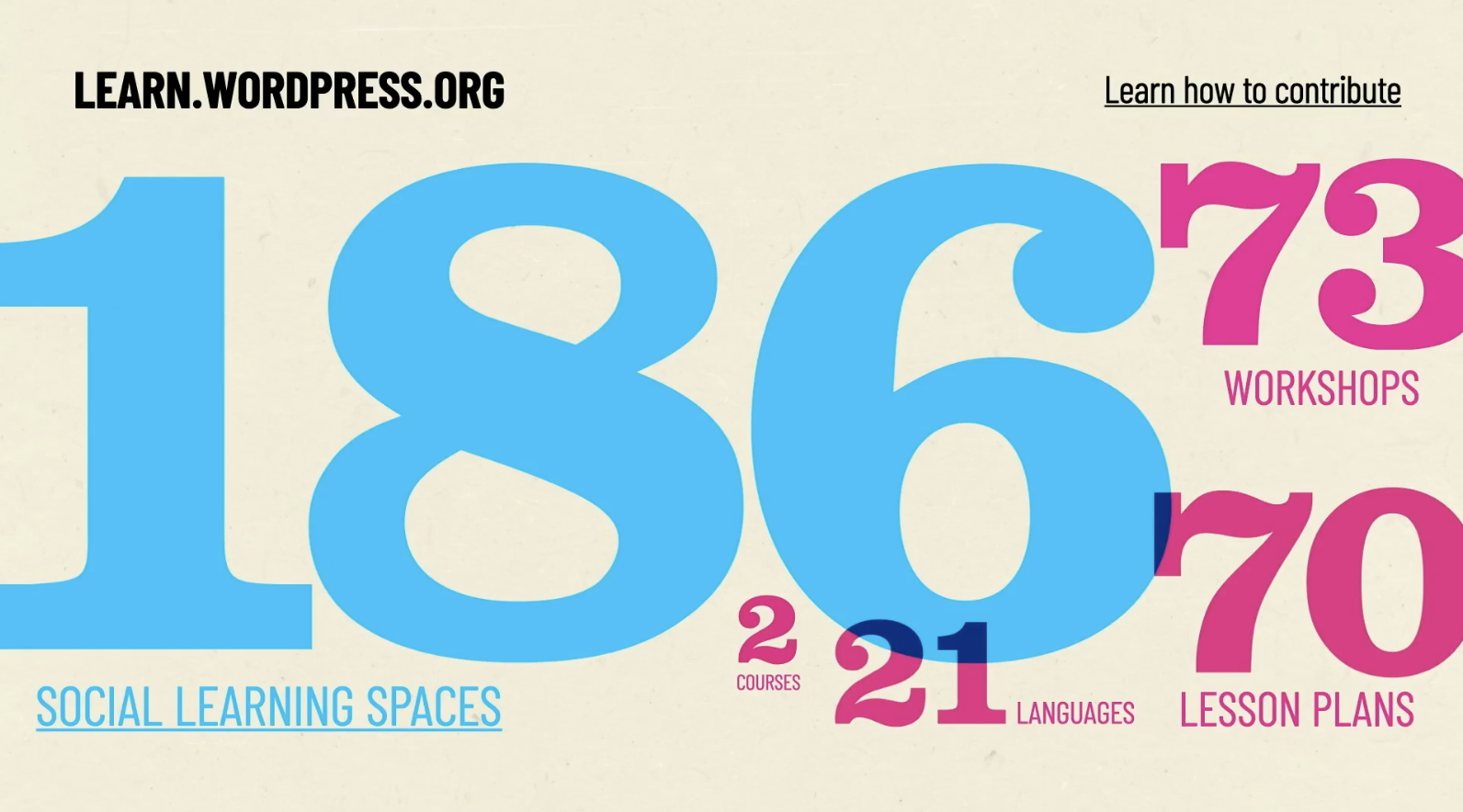
One of the most notable stats from the presentation is WordPress’ distribution, which is now at 43.1% usage on the web, according to W3Techs, up from 39.1% last year.
One concern is that open source CMS’s are slowly disappearing from the top five competitors, as proprietary systems pass up Drupal and Joomla. Mullenweg said in general the CMS’s aren’t taking market share from each other but rather from the websites which previously had no detectable CMS.
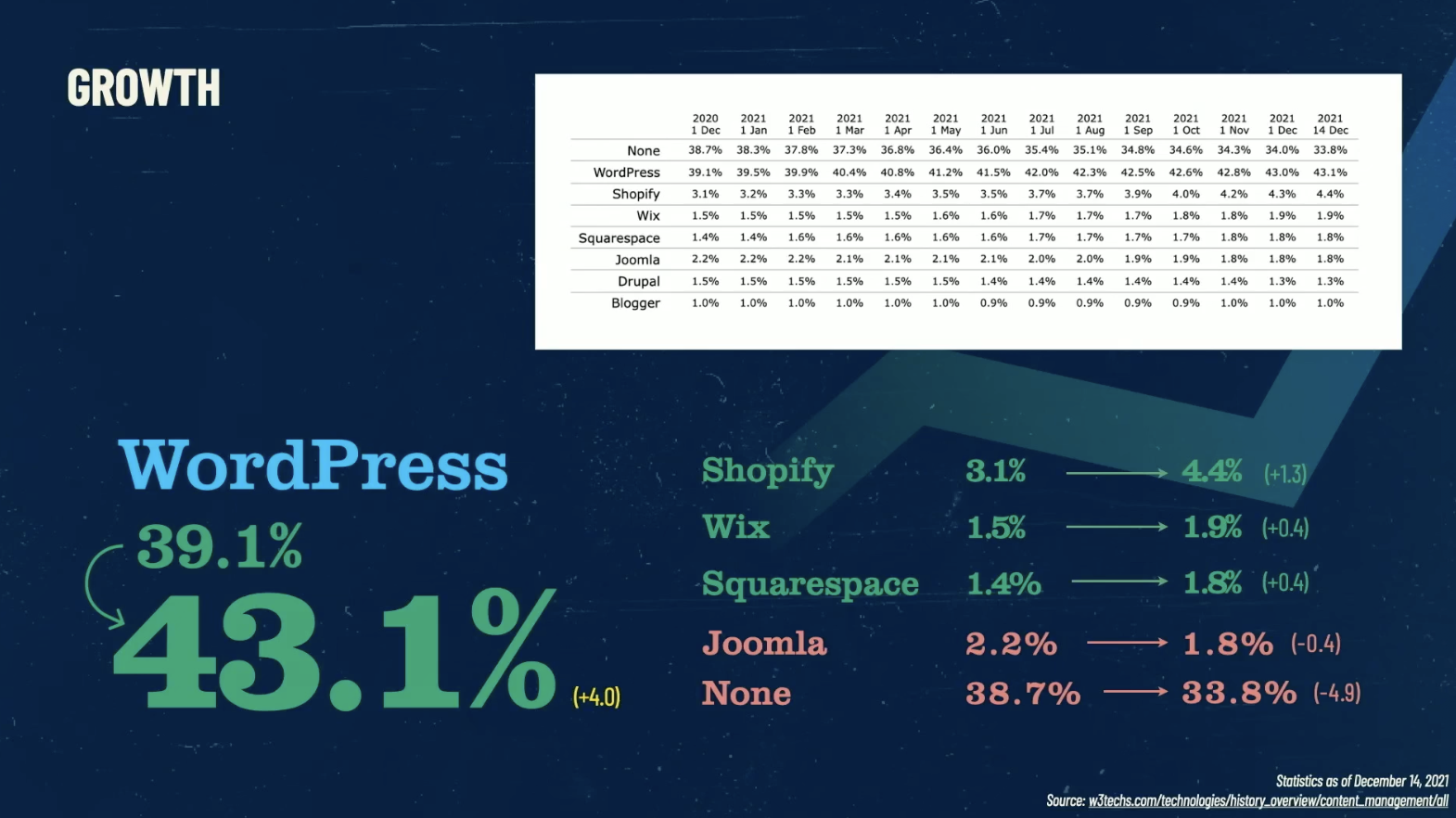
“We actually grew two entire Wixes this year, which is a new unit of measurement,” Mullenweg joked.
“And to put that in perspective, we’re still 10 times larger than number two out there, but this doesn’t happen for free. And we shouldn’t take any of this for granted. There are in the history of software, and certainly the internet, many services that were once dominant that now we need museums to remember what they were there to maintain.
“We really need to stay humble and stay close to users and iterate the software as quickly as possible.”
Mullenweg hinted that 2022 might be a year that WordPress aims for four releases instead of three.
“I’m proud to say it was a good year for WordPress security,” he said. More than 30 people contributed to security patches, and 1/3 of those were first-time contributors.
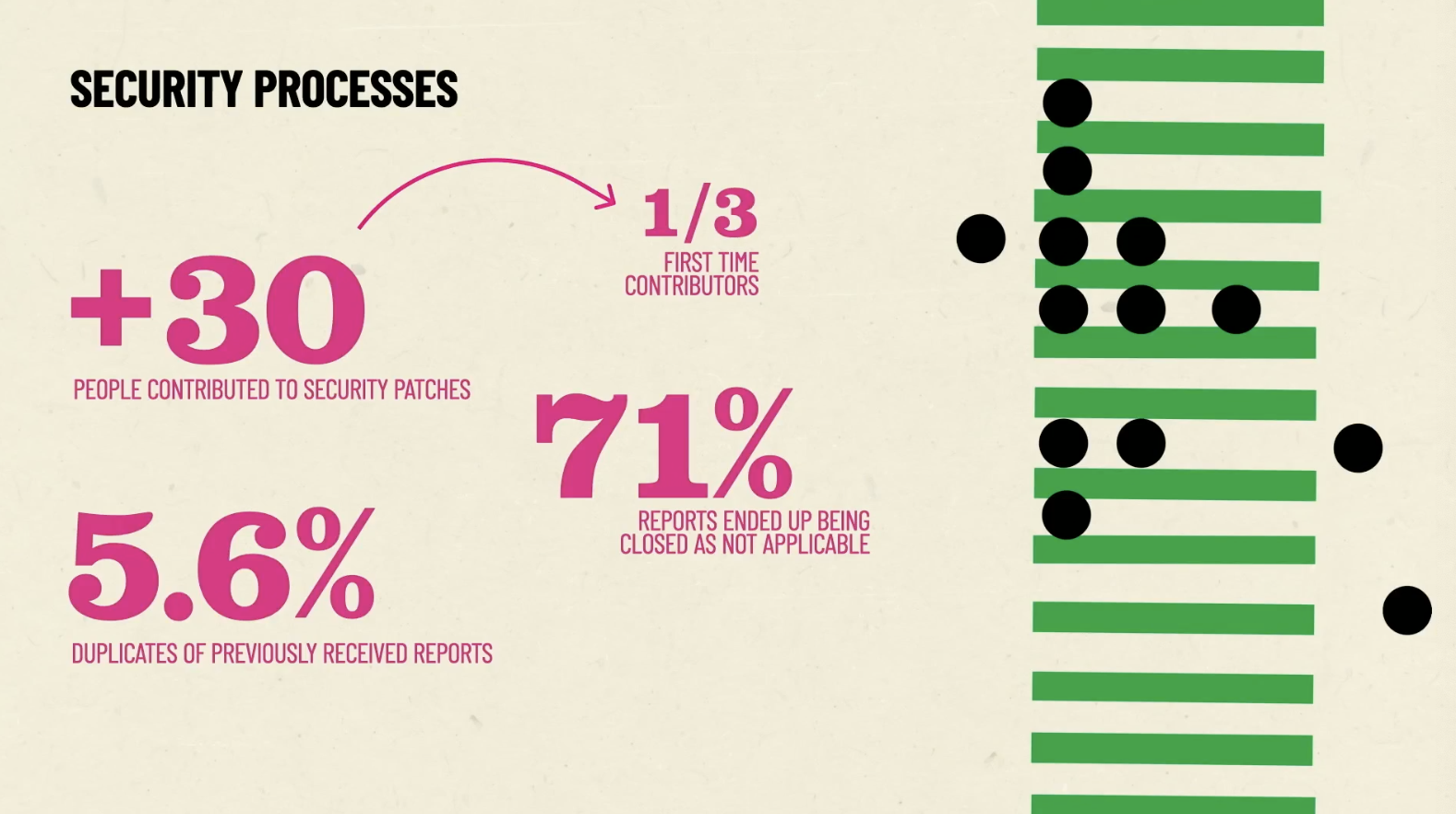
“Security is a process,” Mullenweg said. “Anyone who says they are perfectly secure is tempting fate.
“Our ability to be one of the most secure platforms in the world is one hundred percent a result of how much we’re going to be able to update sites because humans are fallible sometimes.”
State of the Word Features WordPress 5.9 Demos
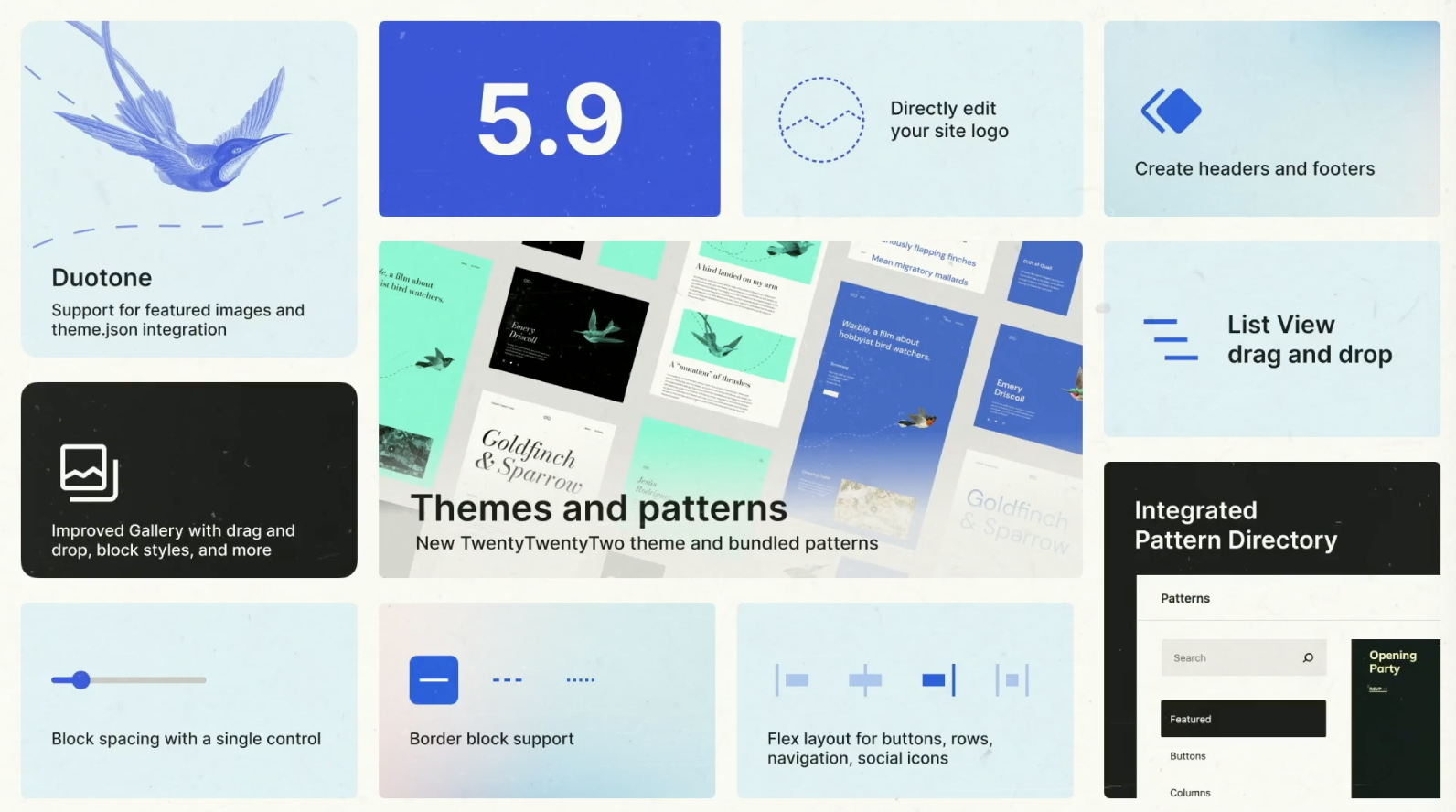
Mullenweg highlighted a few new features coming in 5.9, with demos of block themes, template editing in the block editor, global styles, and pattern improvements. He reiterated that Gutenberg is the future of WordPress for the next decade:
As we look towards the future of WordPress, we are finally achieving one of the things that WordPress set out to do 18 years ago.
This is why we started the Gutenberg project. When we first introduced Gutenberg a few years ago, we said this was going to be the foundation, what the new versions of WordPress were built on, what our next 10 years would be.
Not only are we enabling folks to express themselves uniquely on the web, unlike the cookie cutter that all the social sites try to put you into, the cookie cutter looks. We’re doing it in a way, which is standards based, interoperable, based on open source, and increases the amount of freedom on the web, which is very key, certainly to me, and the most important thing that I work on.
WordPress has just begun on its journey with Gutenberg. Mullenweg reviewed the four planned phases, which began with “Easier Editing” in 2018. The second phase, Customization, started in 2019 and Mullenweg said 5.9 will be the MVP of this phase.
With 5.9 delayed until 2022, he has the third phase, Collaboration, slated for 2023, so that contributors don’t leave customization too early before it’s polished. There are only 28 block themes available so far. “That needs to be 5,000,” Mullenweg said. Later during the presentation he said he hopes that WordPress will “have 300 or ideally 3,000 of these block themes” before entering the Collaboration phase.
There is no timeline yet for the fourth Multilingual phase, which aims to make it easy to publish sites in multiple languages with a workflow that makes sense.
Web3 and the Decentralized Web
Many State of the Word viewers were eagerly anticipating Mullenweg’s thoughts on Web3 and NFT’s, after the controversial topic was included in the State of the Word announcement last month. They speculated on how WordPress might incentivize contribution through tokens or NFT’s. For now, it appears WordPress will keep attracting contributors the old-fashioned way.
Mullenweg’s message was essentially that WordPress already embodies Web3 ideals and has from the beginning.
“What Web3 embodies is two essential ideas — decentralization and individual ownership,” he said. “Those are both things that WordPress is both well-poised to be already doing and to continue doing for some time to come.”
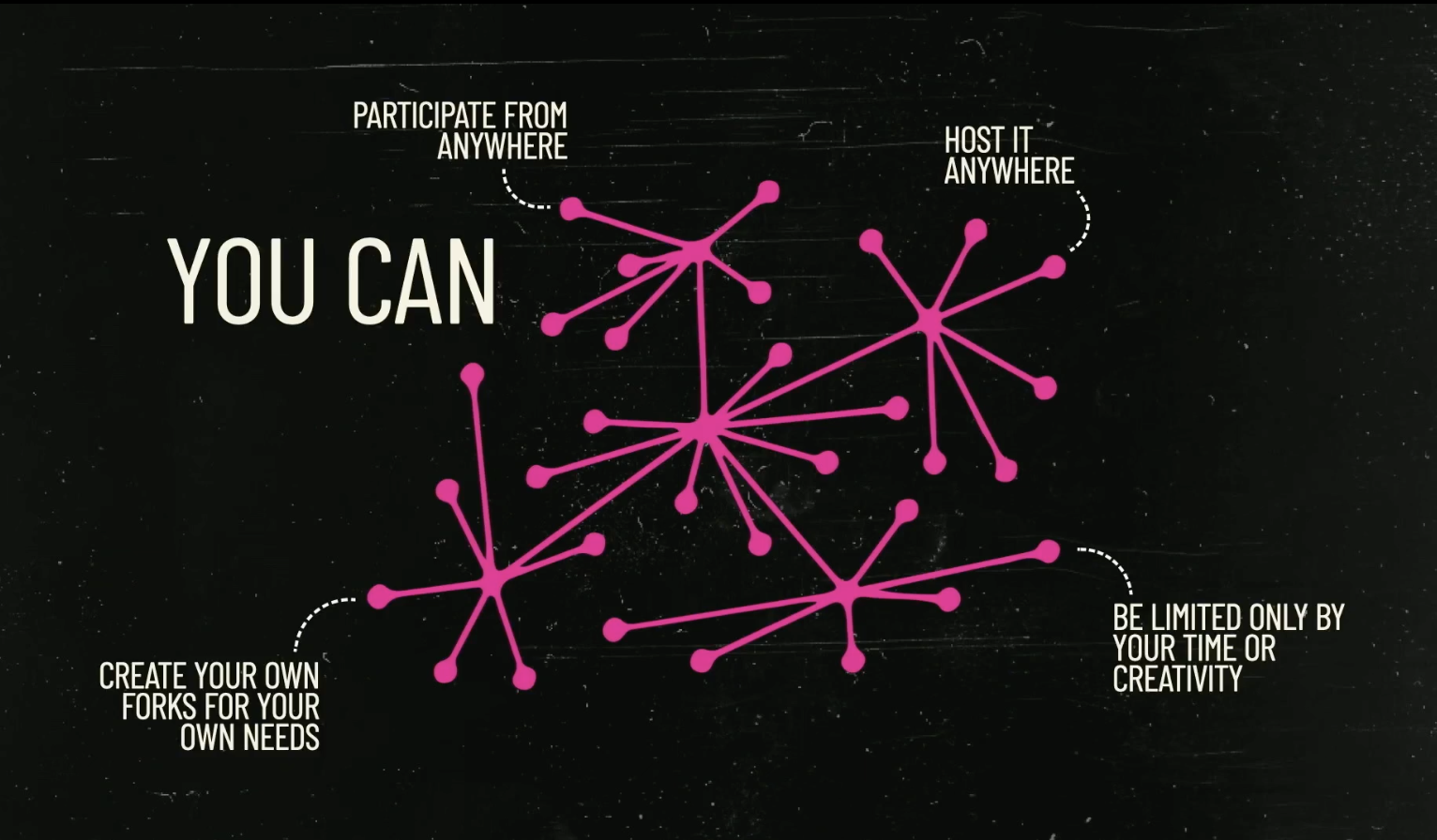
He also cautioned those exploring Web3 projects to keep the freedoms of open source in mind:
There’s been an incredible amount of innovation. I think this has also attracted some hucksters and some folks kind of hustling things that aren’t truly open. So you all are very familiar with WordPress. For every project, which is asking for your money dollars, or for you to pay the cost of a house for a picture of an ape, you should ask, does it apply the same freedoms which WordPress itself does, and how closely does it apply to increasing your individual agency and freedom in the world?
Mullenweg also spoke about the many acquisitions in the WordPress space and put them in the context of what’s happening in the world of business. WordPress appears to be a microcosm of global acquisition activity.
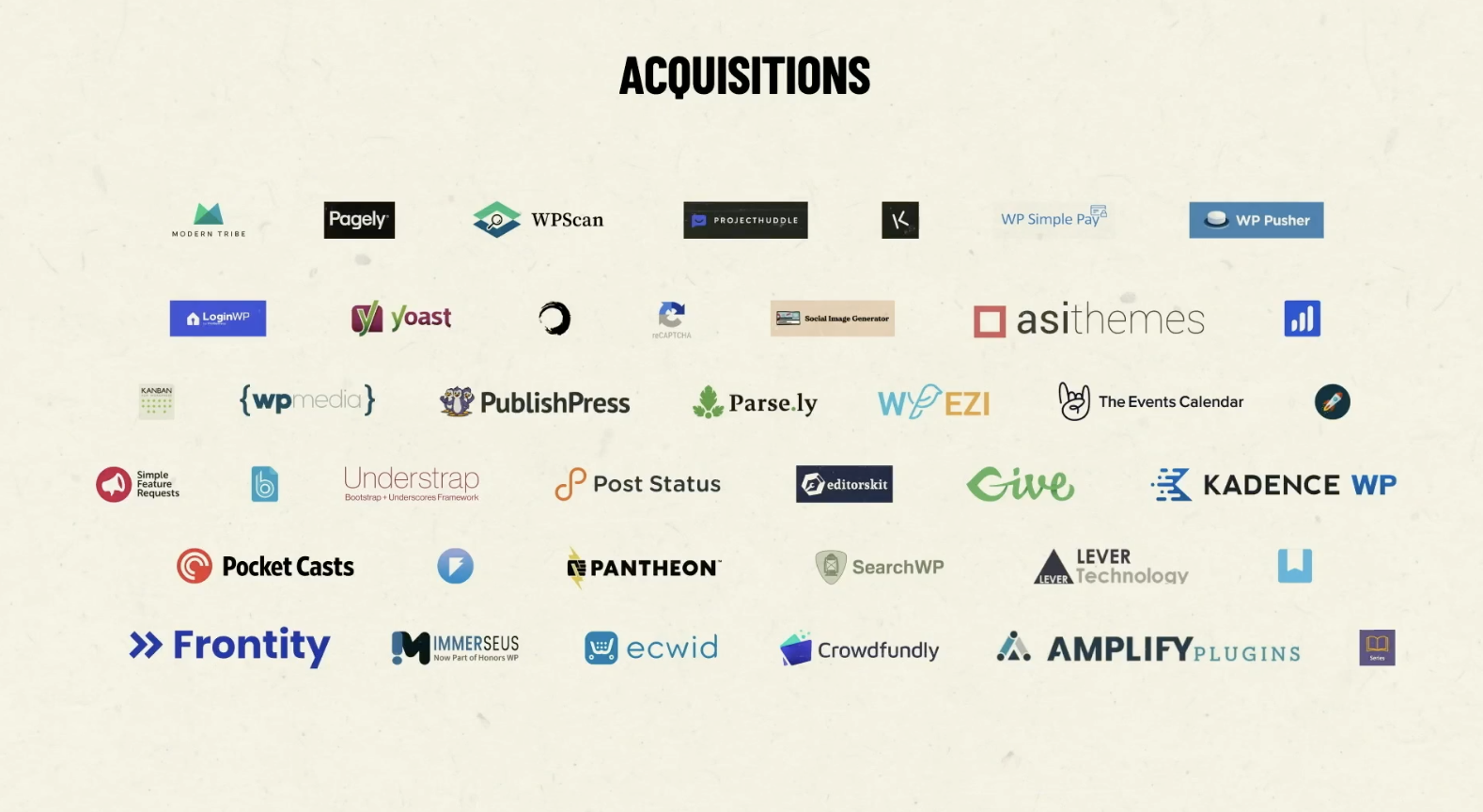
“And if you were to broaden it to the global M&A landscape, not just technology, we’ve seen over 45,000 different acquisitions,” Mullenweg said. This is up over 24% from last year, which is already a huge year and represents $3.6 trillion of different mergers and acquisitions.
“This is driven by another trend, which I found utterly shocking to learn and understand, which is capital inflows to stocks,” Mullenweg said. He shared a chart that shows how much money is moving from other assets into the public equity markets.
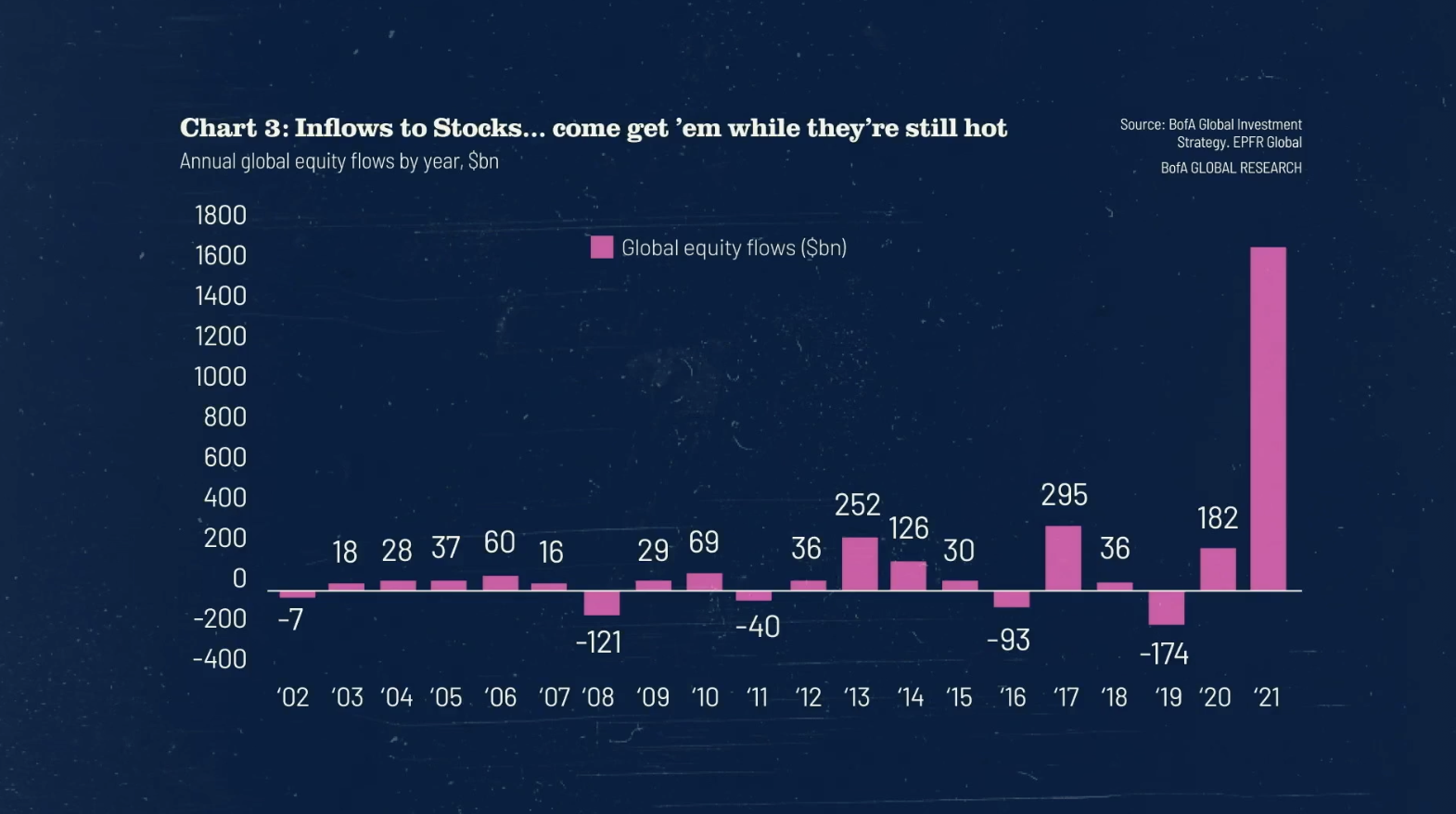
A Call to Contribute Back to the Commons
With an economy estimated at over $10 billion per year, and all the companies making millions of dollars using WordPress, Mullenweg took a few minutes to highlight how the Five for the Future program has protected the project from the Tragedy of the Commons.
In one slide, he dispelled the myth that the impact a company has on the future of WordPress is dependent on the size of the company.
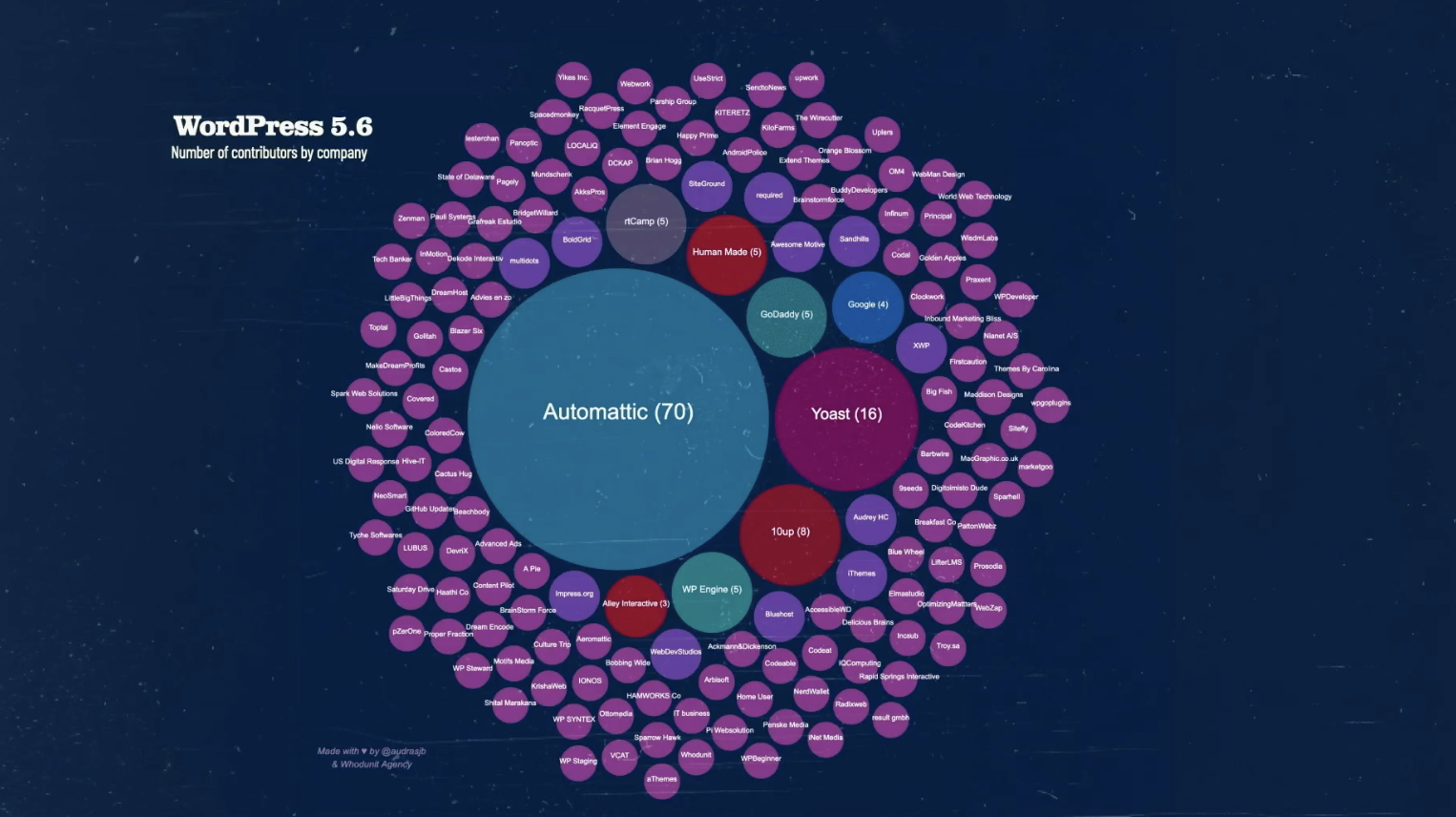
For example, Yoast has a major impact on WordPress, despite having 80x fewer employees than GoDaddy, a web host that Mullenweg seemed to be specifically calling out in the presentation when driving the point home:
So the impact the company has on the future of WordPress is not at all related to the size of the company. There’s no reason that if we really take to heart what’s made us successful so far, that we can’t get more companies participating in the commons of what’s happening.
When a company benefits from WordPress, when they put something back into the core, whether that’s your translations community volunteering or code, as this particular graph is representing, it ensures that there’s something left in the future for WordPress to be there. You can’t run Wix or Squarespace on GoDaddy.
Mullenweg also officially introduced Openverse now that the first version is live. He shared some of his vision for the project’s future with WordPress. The plan is to build this into the admin, so that when users upload a new image or video, they will be able to choose from among Creative Commons licenses and perhaps have their work indexed in the Openverse.
“It’s all about creators having the control and autonomy they need to license their content, however possible,” Mullenweg said. “And for those that choose to put into the commons, that then becomes a part of what is shared in humanity and allows us to grow and create cool things together.”
He also introduced the new WordPress.org Photo Directory, which hosts totally open imagery that can be used on any site for commercial and non-commercial uses. Someday WordPress users will be able to insert works from the Openverse into their content with just one click.
In addition to contributing to Gutenberg through patterns and block themes and other means, Mullenweg also encouraged users to put some of their work into the Openverse.
We’ll go deeper into some of his Q&A answers in an upcoming post, but one common theme among the questions was how WordPress might attract a younger generation of contributors and what advice Mullenweg might give to the young people inheriting the investments contributors have made in WordPress.
In his response Mullenweg returned to his call to replenish the commons. This lifestyle of giving back and making things as open as possible is the golden thread running through the message of this year’s State of the Word.
I think if you just give a person a blog, or even worse, a social media account, you feed them for a day. You teach them how to create the web, which is in many ways, in my opinion, the most amazing actualization of shared humanity and knowledge – how do we create something that lasts beyond our own individual lifetimes? It’s the web.
How do we create something that lasts beyond us? A legacy, a true legacy. It’s adding to the information. That’s part of what hopefully goes forward for future generations and then allows us to sort of fast [forward], skip all the mistakes, skip all the learnings, to what’s latest. It’s upgrading the clock speed and version of humanity.
With the official launch of Openverse and the continued growth of WordPress against proprietary systems, Mullenweg was able to make a compelling case for contribution as a matter of importance to humanity — a meaningful way to increase the commons available to future generations and to be part of defining the future of the web. The vision of Openverse goes beyond WordPress, as Mullenweg said it is “something the WordPress community is creating for the benefit of the world,” with works that people are free to use on any platform.
“I think it’s possible to have an abundance of the commons,” Mullenweg said.
“So the more people that use a program, the better it gets in so many ways. More bugs get reported, more translations happening, more plugins get developed, more themes get developed.” This is one of the reasons market share is a strong indicator of the health of the project and its potential to continue meeting users’ needs.
“But part of that is some percentage of the people who essentially directly benefit from WordPress, putting something back into the commons, fertilizing the soil, planting some more grass,” Mullenweg said.

